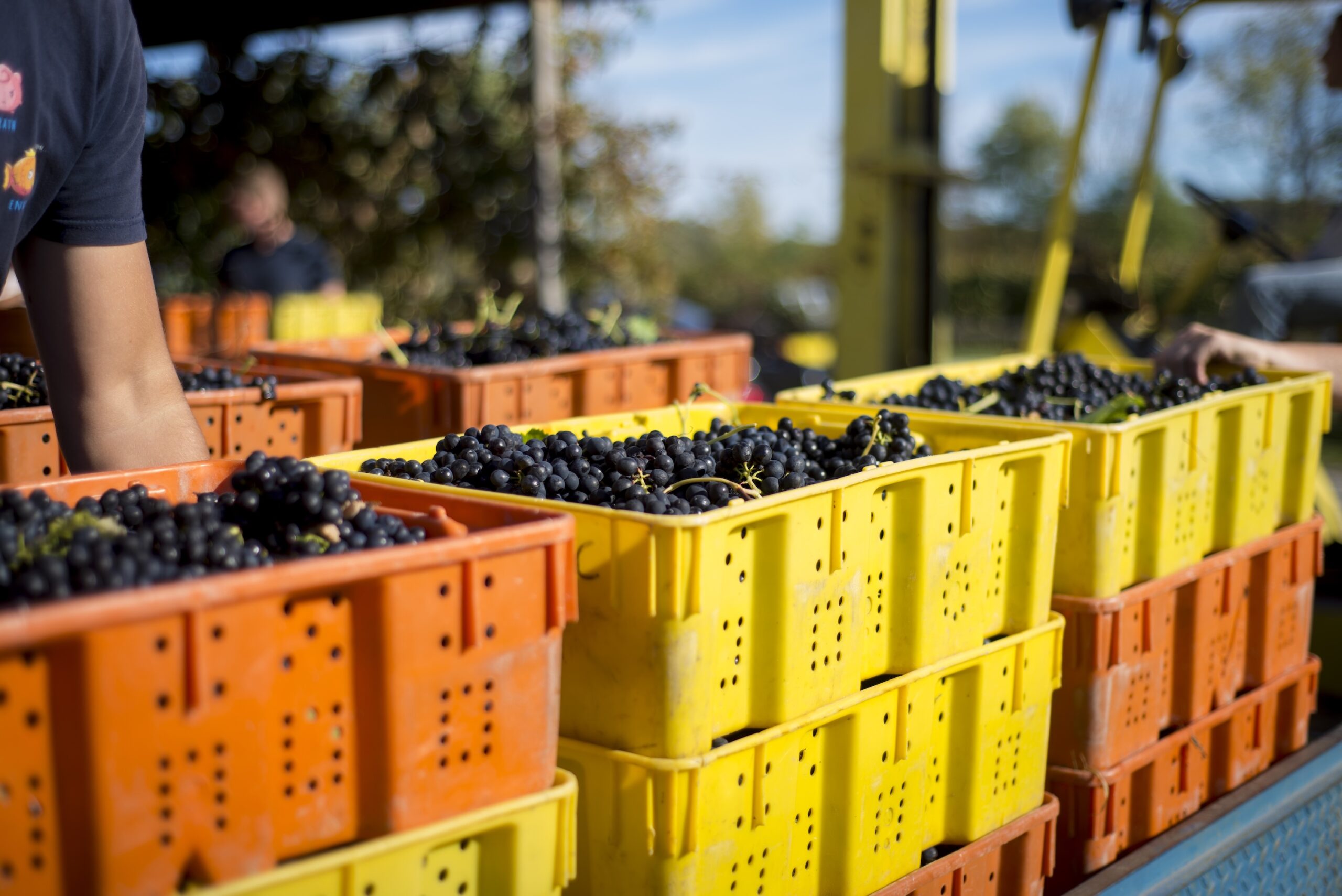
The climate of Finger Lakes Wine Country is ideal for growing grapes due to a combination of factors related to temperature, humidity, soil, and the unique geography of the region. Here’s why the Finger Lakes region, including areas like Seneca Lake, provides an excellent environment for viticulture:
1. Moderating Effect of the Lakes
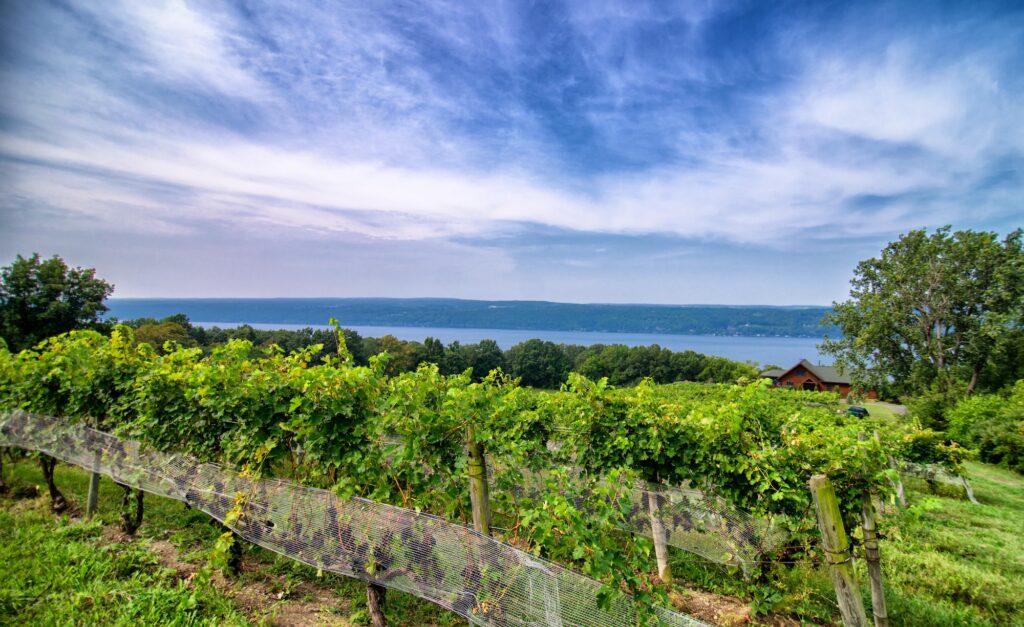
The Finger Lakes are a series of long, deep, glacial lakes, and their large bodies of water play a crucial role in regulating the climate in the surrounding areas. During the growing season, the lakes act as a thermal buffer, absorbing heat during the warmer months and releasing it slowly in the cooler months. This moderates temperature extremes, protecting vines from late spring frosts and early autumn freezes. The relatively longer growing season this creates allows grapes to ripen fully, while also helping to preserve their acidity, which is crucial for producing high-quality wine.
Summer: The lakes help maintain a moderate daytime temperature. While the surrounding regions may experience hot spells, the lakes’ waters help keep the air cool, preventing the grapes from overheating.
Fall: As temperatures begin to cool in the autumn, the lakes continue to release heat, providing a more gradual transition to cooler weather. This extended growing season is essential for grape ripening, especially for varieties like Riesling, which thrive with a long, cool growing season.
2. Cool Climate Viticulture
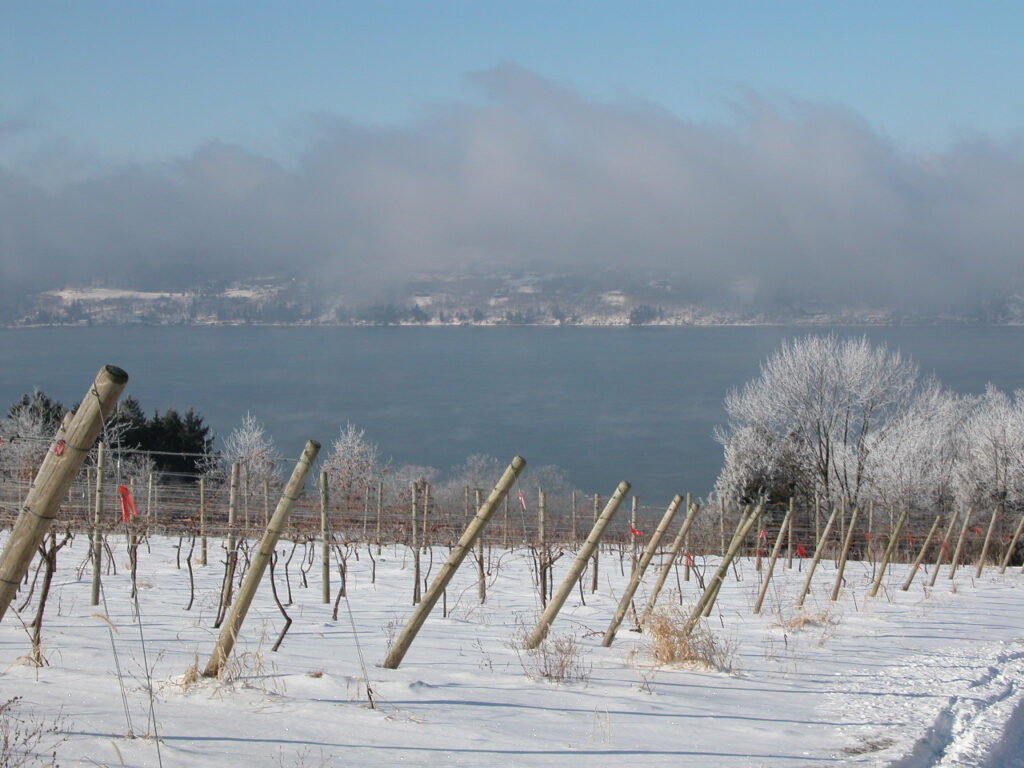
The Finger Lakes region is considered a cool-climate wine region, which is perfect for certain grape varieties that prefer cooler growing conditions, such as Riesling, Chardonnay, and Pinot Noir. The cooler climate helps grapes maintain their acidity, which contributes to the crispness, balance, and freshness of Finger Lakes wines.
Cooler temperatures also help prevent over-ripening of the grapes, which can lead to a loss of delicate flavors and aromatics. This is particularly important for white wine grapes, which require cool weather to maintain their signature bright, fresh profiles.
3. Soil Composition
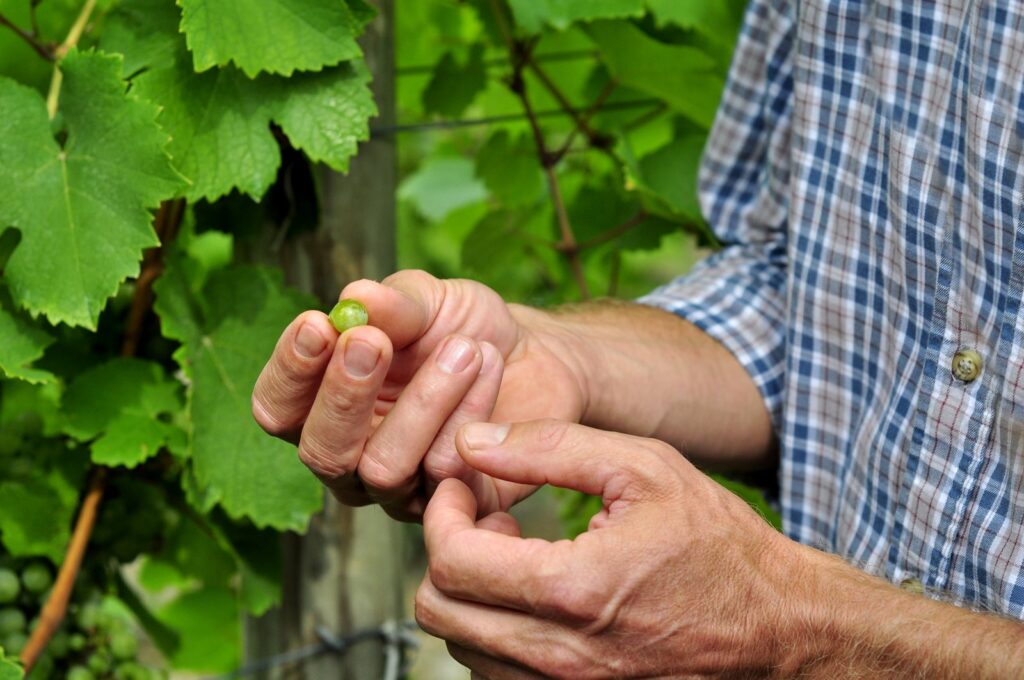
The Finger Lakes region benefits from well-drained, nutrient-rich soils, especially around the lakes. The soil is often a mixture of loam, clay, and gravel, which provides excellent drainage while holding just enough moisture for grapevines. These well-draining soils help prevent root diseases and ensure that the vines are not waterlogged, which could otherwise negatively affect grape development.
In addition, the glacial deposits in the region have left a rich mixture of minerals, which contributes to the terroir of the wines. The mineral content in the soil helps give Finger Lakes wines their unique, often mineral-driven characteristics.
4. Topography
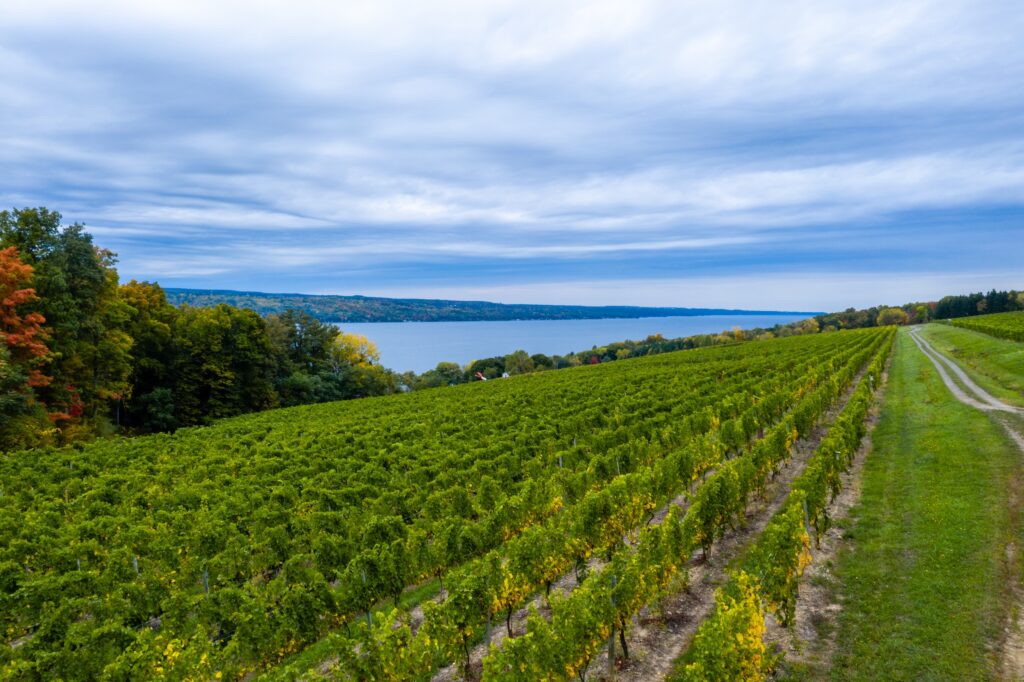
The region’s hilly, sloping terrain is another factor that makes it suitable for grape growing. The hillsides allow for optimal sun exposure, ensuring that grapevines receive plenty of light during the growing season. Vineyards planted on south- or west-facing slopes get more sunlight, which aids in grape ripening and helps concentrate flavors in the fruit.
Additionally, the slopes help with air circulation, reducing the risk of frost in the spring and fall. Cold air tends to settle in valleys, so by planting vineyards on elevated sites, wineries can reduce the chances of frost damage, especially in early spring when frost is most damaging to delicate grape buds.
5. Humidity and Rainfall
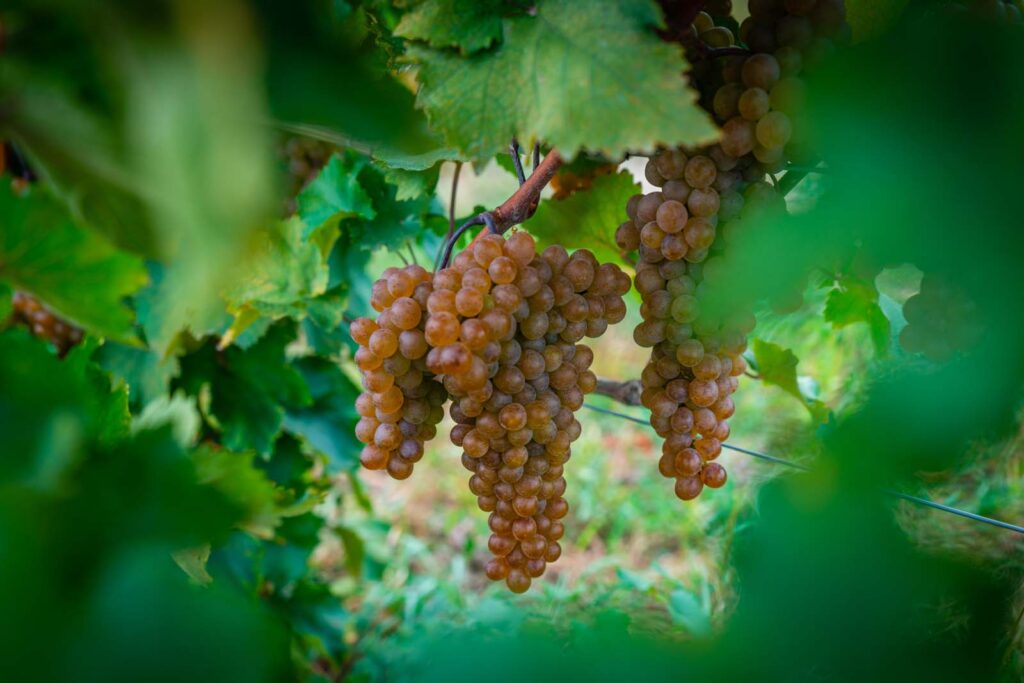
The Finger Lakes region enjoys moderate precipitation, which helps maintain healthy soil moisture for grapevines. The region typically experiences around 30-40 inches of rain per year, which is enough to keep the vines hydrated without causing excessive waterlogging.
In terms of humidity, the lakes themselves contribute to a relatively humid environment. While too much humidity can promote fungal diseases, the region’s cooler temperatures and good airflow (especially around the lakes) help mitigate this risk, ensuring that vines remain healthy.
6. Protection from Harsh Winters
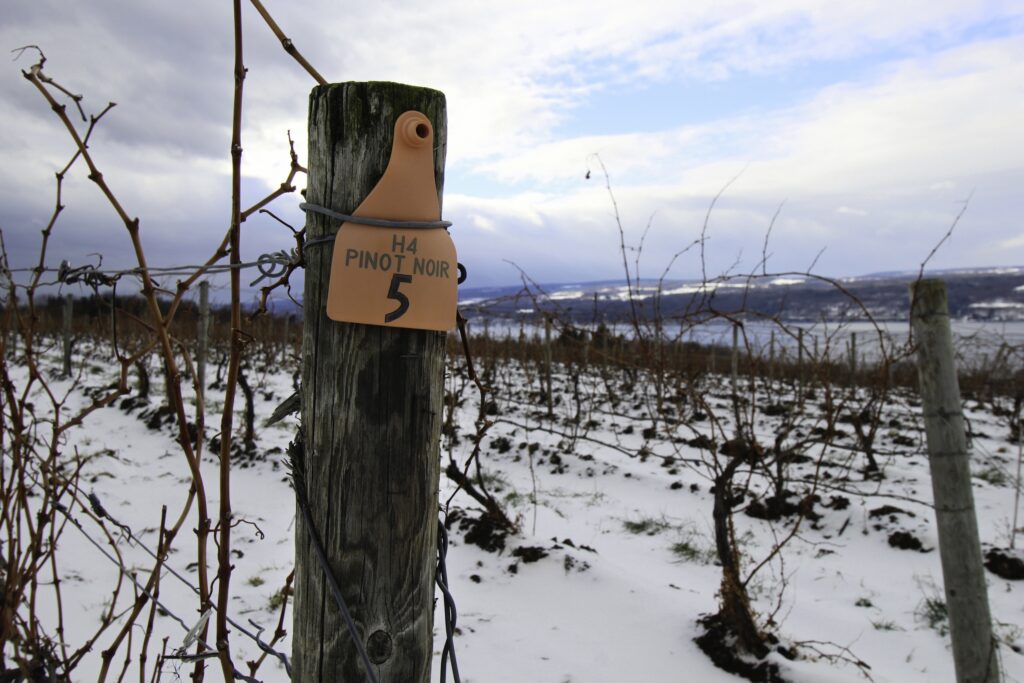
While the Finger Lakes region does experience cold winters, the moderating influence of the lakes helps protect the vines from the extreme winter temperatures experienced in more inland, northern regions. In addition, many vineyards practice winter protection techniques such as burying the vines or using wind machines, helping to further shield the vines from frost damage.
7. Regional Climate Variations
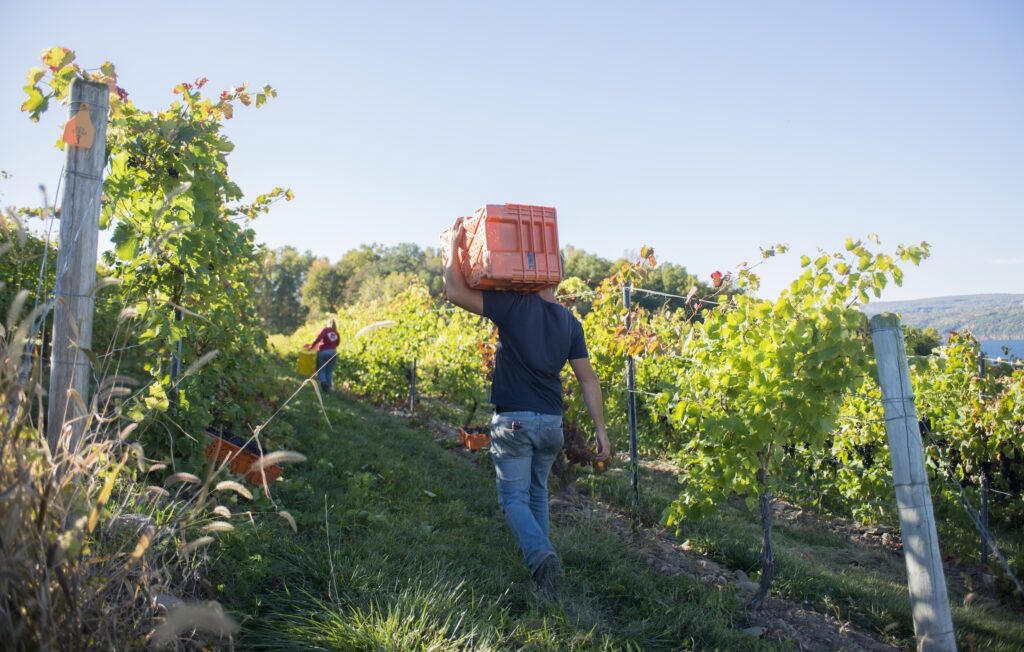
Different Finger Lakes, like Seneca Lake, Keuka Lake, and Cayuga Lake, each have their own microclimates, influenced by their size, depth, and orientation. These microclimates can create subtle variations in temperature and humidity, which allows winemakers to experiment with different grape varieties and styles of wine.
For example, Seneca Lake has the deepest of the Finger Lakes, which means it has a greater capacity to moderate temperatures, creating an even more favorable growing environment for longer-maturing grape varieties like Cabernet Franc or Gewürztraminer.
Overall, the cool, moderate climate, combined with the protective influence of the lakes, well-draining soils, and favorable topography, makes Finger Lakes Wine Country one of the best places in the U.S. for growing high-quality grapes, particularly cool-climate varieties. These conditions allow the region to produce wines with exceptional balance, crisp acidity, and distinct terroir, making it a renowned wine-growing region.